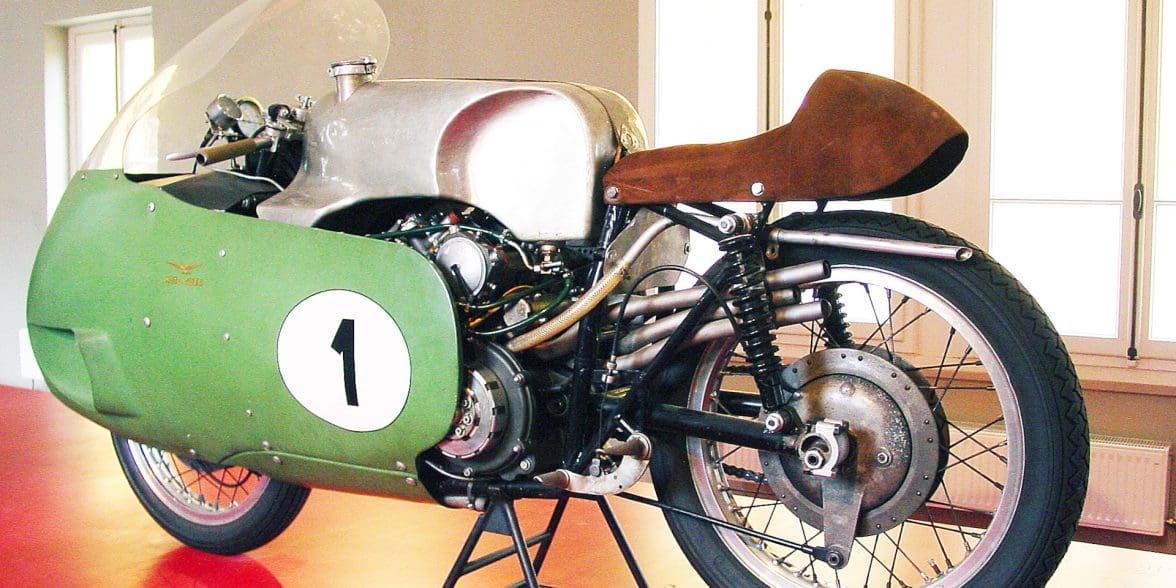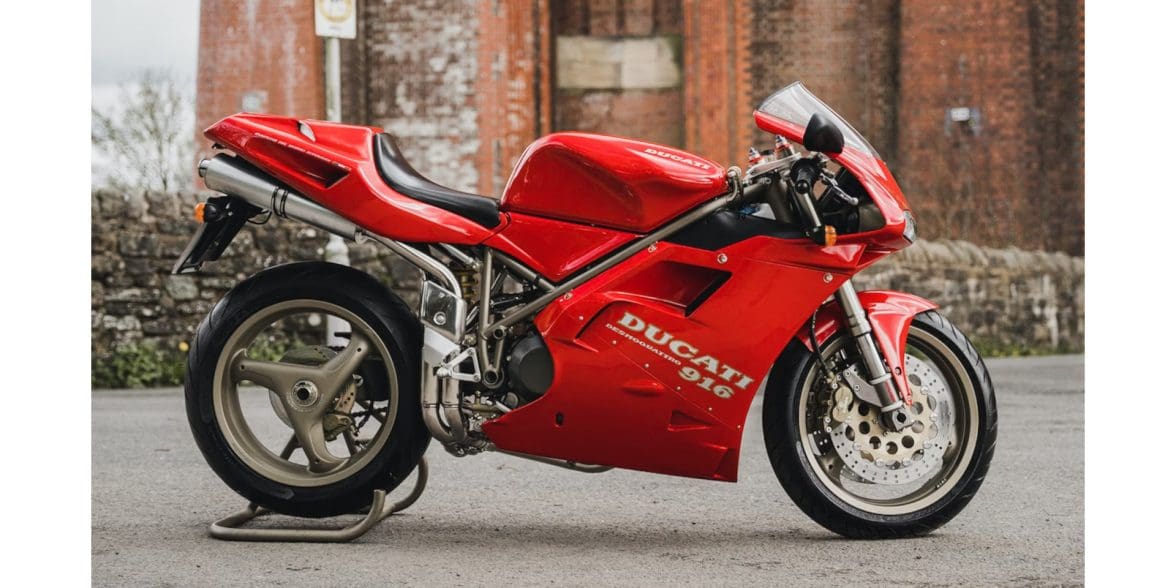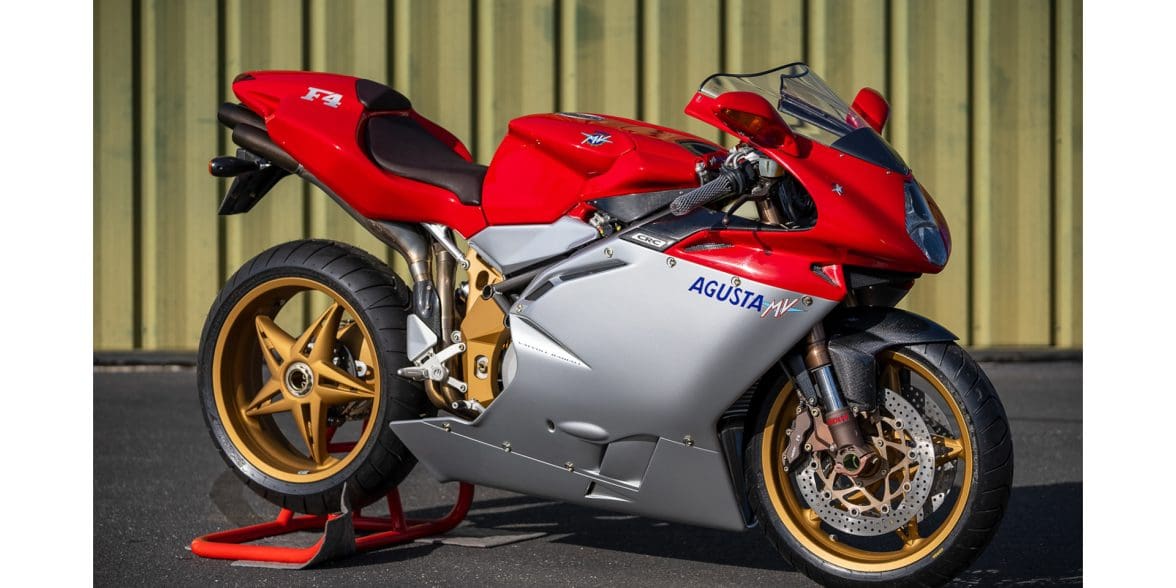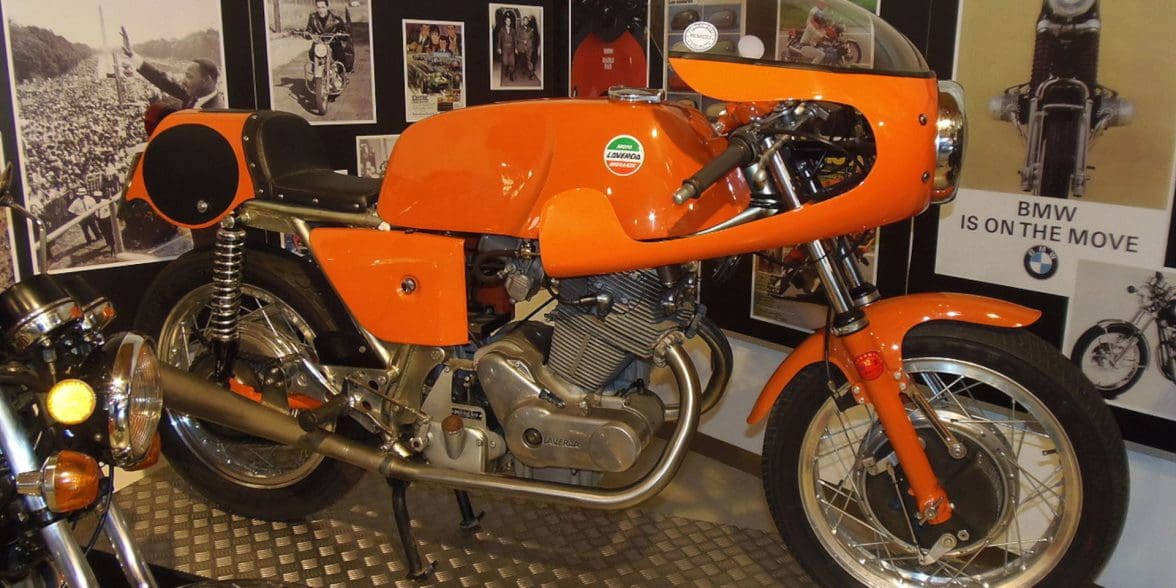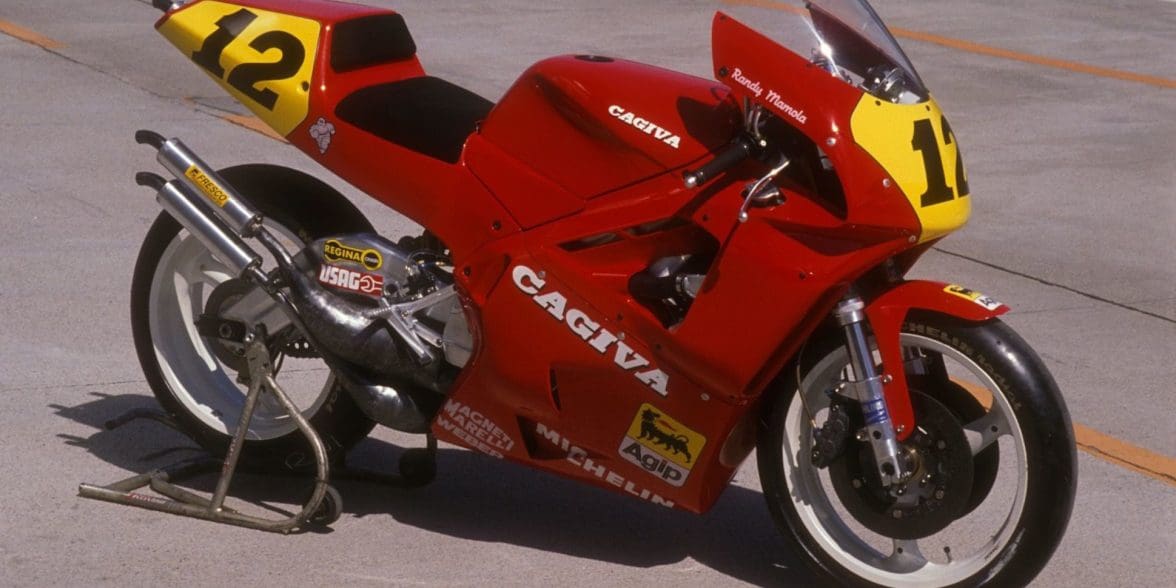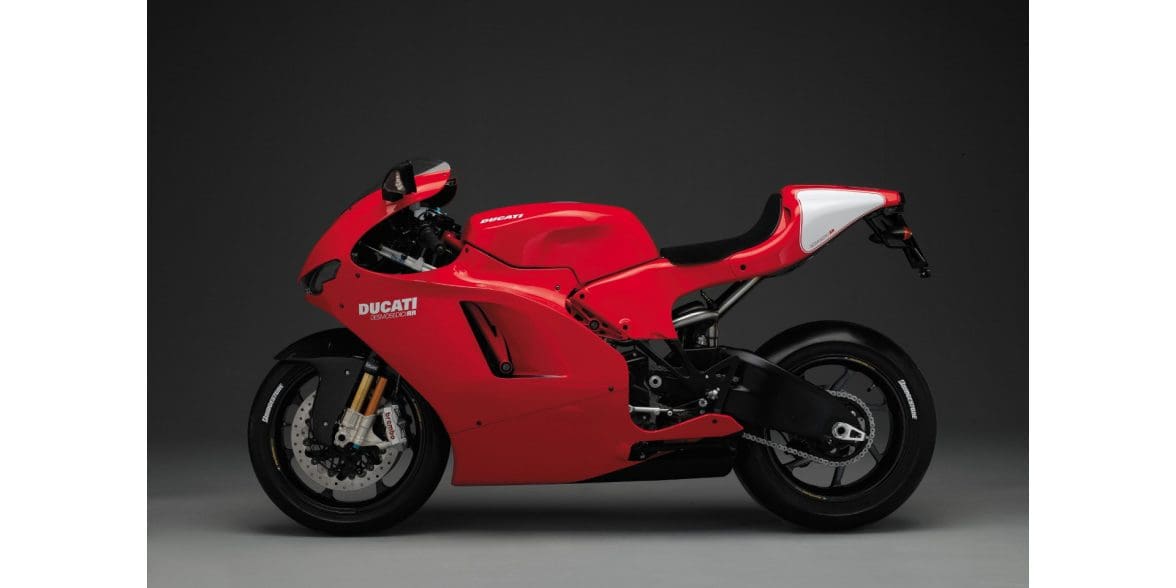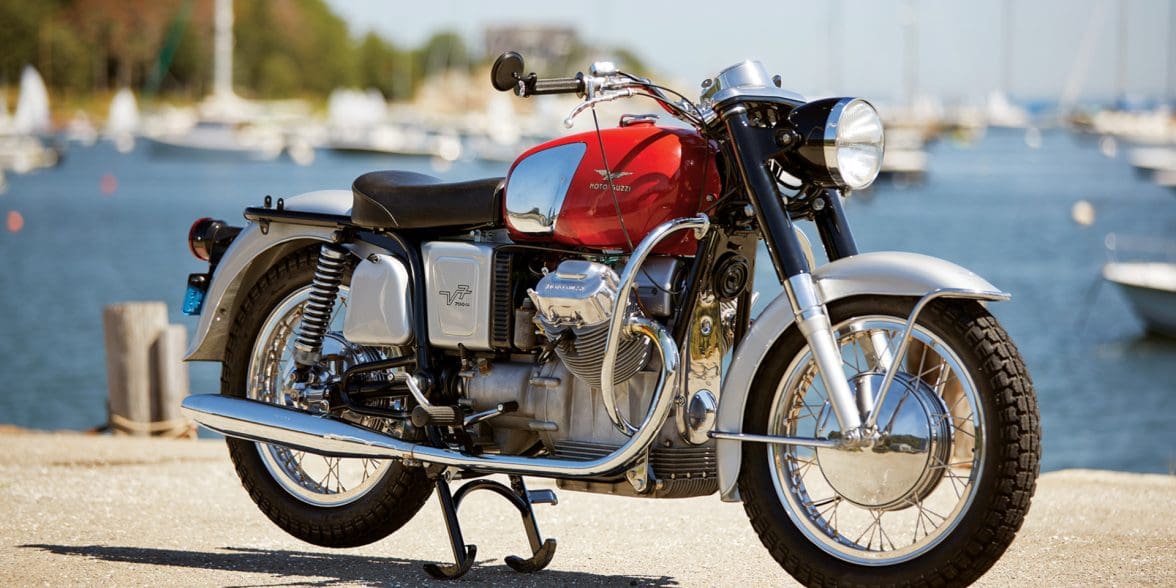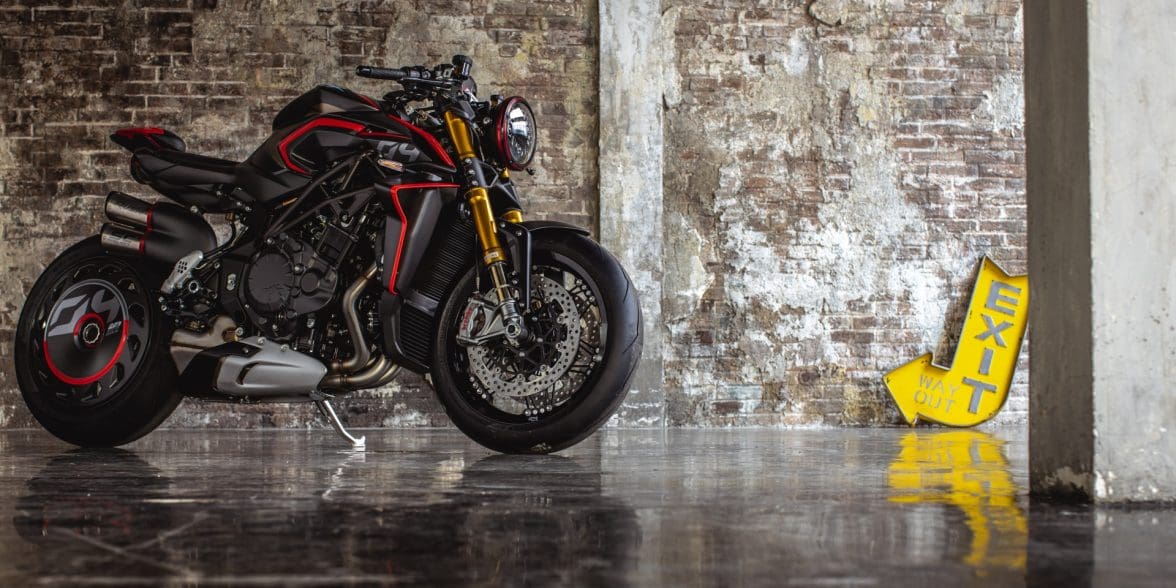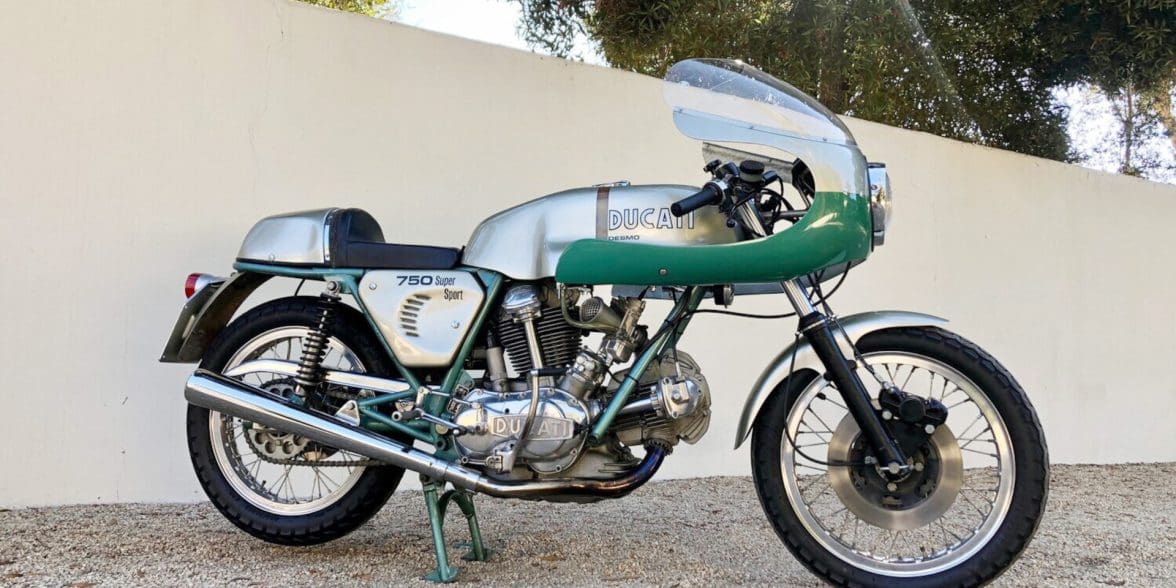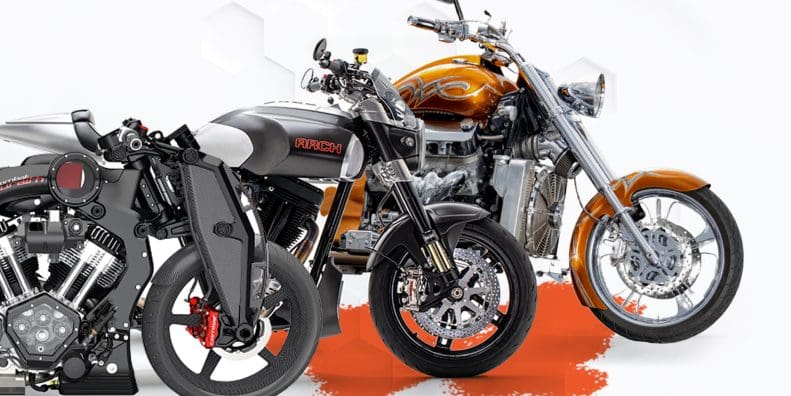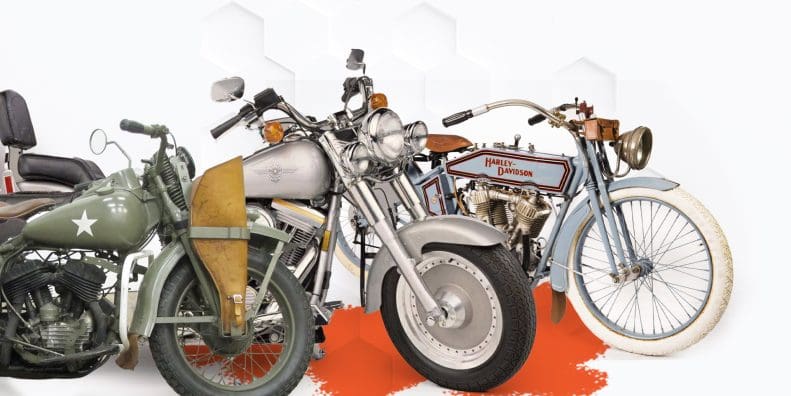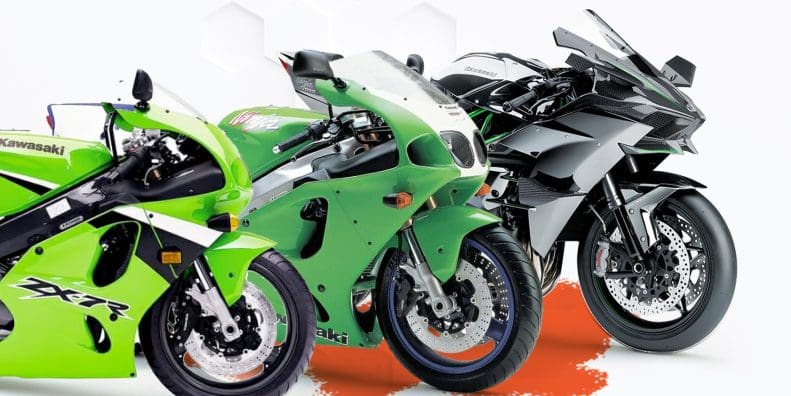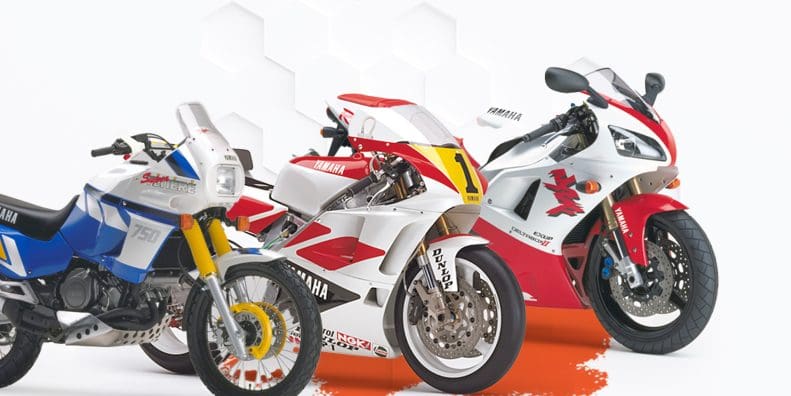The Best Italian Motorcycles Of All Time [2024 Edition]
Updated November 26, 2023 by Simon Bertram
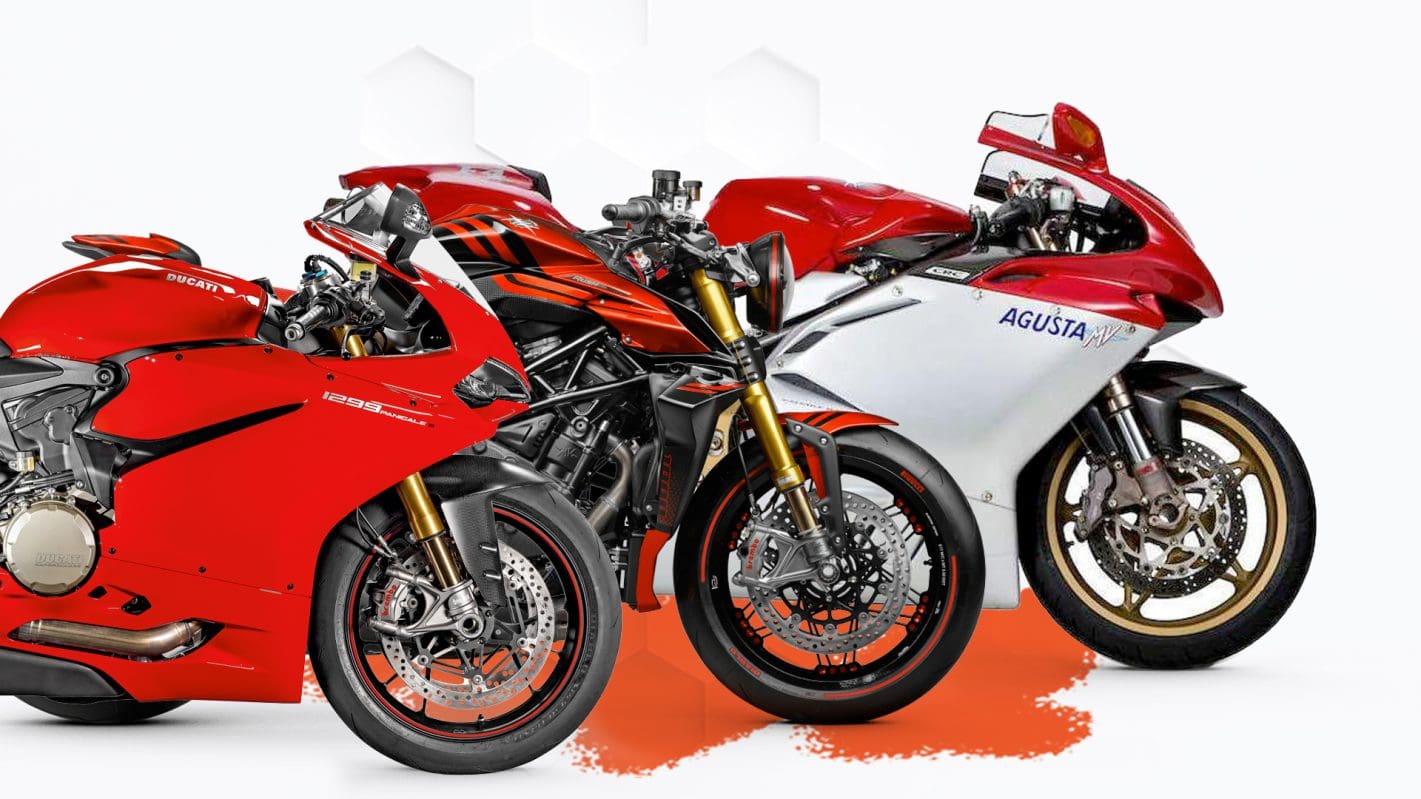
Per Quando La Strada Chiama Il Tuo Nome!
Article Quick Nav
These are some of the best Italian bikes every made:
If you're wondering what that means directly above, it's Italian for "When the road calls your name." It's an appropriate phrase too, as Italian motorcycles have that certain something about them that makes you want to just ride. You might not have a destination, you might be commuting, or you might find an excuse to just get out on two wheels, but when you swing a leg over an Italian bike, it just feels right.
No other nationality has truly combined the emotion of riding with the mechanical prowess to make each corner carved a scintillating experience. The Japanese do have some very cool looking bikes with amazing tech, the Germans are the kings of "Form mostly follows function," and the British are all about modern technology with a ton of nostalgia draped over it. But the Italians just have the pure emotion, the happiness of being on the road, the way your heart skips a beat when you crank open the throttle and a howl comes from a perfectly tuned exhaust and that buzz shivers up your arms...
That being said, there have been bad Italian bikes and good Italian bikes, and then there are the truly memorable ones. They may be the one that defines their segment. They may be the road going version of a racing bike, or just a racing bike without a street version. These are nine of the best Italian bikes ever made, polled from all our staff at wBW.
About Our Selections
These selections considered importance of the motorcycle to the entire history of riding, as well as its significance in representing Italy to the world. This is one of the very few lists that a racing bike that was so special had to be included, that we will allow a racing only motorcycle into the list.
1954 Moto Guzzi Otto Cilindri
One of the most radical ideas for a racing bike engine that actually competed!
Why We Picked It:
These days, it seems like manufacturers want to play it safe, keeping within the regulations for racing without really truly going "Out there" as they did in the old days. Moto Guzzi's Otto Cilindri race bike was the definition of "Out there," for one very compact but odd reason.
That reason, as you may have surmised, is the fact that the engine had 8 cylinders. It was a transverse V8, and an absolute gem of engineering. Liquid cooled, 499cc, DOHC, each cylinder with its own throttle body and Dell'Orto 20mm carburetor. It put out a hefty (for the time) 80 HP, and the frame was made as lightweight as possible. It was then wrapped up in the most aerodynamic shape as understood back in the 50's.
The result was a racing bike that could reach 170 MPH. In 1954. It was way before its time, as the drum brakes, the tires, even the riders were not able to handle its massive power and speed, and after being crashed a few times, as well as the economic recession in Italy in 1957, the Otto Cilindri was withdrawn from racing, and the only two ever made are in Moto Guzzi's museum and archives.
Specifications:
Price: Priceless
Engine: 499cc transverse V8
Power: 80 HP
Torque: Unknown
Transmission: 4 to 6 Speed Manual, depending on setup for each race
Curb Weight: ~350 lbs
Strengths:
To date, the only known V8 racing motorcycle
The most advanced motorcycle engine in the world in the 1950s
Was capable of reaching 170 MPH, making it one of the fastest motorcycles of the 1950s
The only motorcycle that world class riders of the time refused to ride as it was too powerful for the brakes and tires
Learn More:
1994 Ducati 916
Do we really need to say anything? One of the most perfectly beautiful bikes of all time
Why We Picked It:
The word perfect is a very powerful term. It means that there's nothing wrong at all with something, and as the saying goes, "Nothing's 100% perfect," which is true. But damn, does the 1994 Ducati 916 get to 99.9999%!
Not quite the street version of the World Championship Ducati 888 bike, the 916 was the first of their long line of sport bikes to carry the Desmoquattro L-twin engine. Originally designed for and used only for racing, it was prohibitively expensive to manufacture as it was the first powerplant for the street with four valves, not two, per cylinder.
Then you have the body, styled and designed by the maestro of motorcycles Massimo Tamburini. Every line, every curve, every little bulge or concave section had a purpose, with the concept of the bike being a racing bike with a plate holder, turn signals, and mirrors. It was so close to perfection that F1 legend Ayrton Senna, an avid motorcyclist, after just seeing it, authorized Ducati to make a special edition of the special edition. He unfortunately died just a few days later at Imola, so he never got to see the bike that bore his name.
The result was the Ducati 916 Senna, which has a carbon fiber body and carries the Senna S logo, which rarely gets approved to be on anything. It is impossibly rare, and if you want one in good condition, expect to pay well North of $100,000
Specifications:
Price: $13,500 in 1994 ($29,900 in 2023)
Engine: 916cc four-valve-per-cylinder L-twin
Power: 114 HP
Torque: 67 lbs-ft
Transmission: 6 Speed Manual
Curb Weight: 429 lbs
Strengths:
First road bike from Ducati that featured a single sided swingarm like a race bike, as it made rear wheel changes faster and easier to access
First road bike to carry the racing Desmoquattro L-twin, now a design staple for Ducati sport bikes.
One of the most sought after motorcycles by Ducati collectors, often fetching up to $80,000 or more at auction
The extremely rare Senna Edition is the "Unicorn" bike for many a Ducati collector, and any time one is at auction, the bidding can be fierce and often well beyond $100,000
Learn More:
1999 MV Agusta F4 Series
The bike lineup that quite literally saved MV Agusta from going under
Why We Picked It:
Just before the calendar flipped over to the year 2000, MV Agusta had for years been suffering some severe financial woes, even though they were propped up by the Castiglioni family. The outlook was dire, so MV Agusta threw one of the biggest Hail Mary throws of all time, releasing the F4 series of motorcycles.
The bike was made by a literal dream team. Massimo Tamburini led some of the best engineers, fabricators, and designers, assembled specifically for this project, and was given carte blanche to make the ultimate superbike. They even went as far as contracting in Ferrari to help with the engine design, which was based on an early 1990's Formula One powerplant.
When the bike was revealed at EICMA in 1997, many jaws met the floor, and the first edition of 300 bikes, the 750 Serie Oro, were all pre-bought on the display prototype alone. It hadn't even gone through much testing by 1997! Through testing and refinement, the Series Oro was followed by the 750 S in 1999, the mass production version, which had record sales for MV Agusta globally, and quite literally pulled the company out of the red.
Specifications (1999 Serie Oro):
Price: $36,995 in 1998 ($69,400 in 2023)
Engine: 749.5cc inline four
Power: 126 HP
Torque: 54.5 lbs-ft
Transmission: 6 Speed Manual
Curb Weight: 399 lbs
Strengths:
A literal dream bike, it had the best tech, the best design, the best materials, and when you bring in Ferrari to help design the engine? Yeah, it was a special bike
Each of the Serie Oro bikes had a 24-karat gold badge and certificate of authenticity signed by Tamburini and the head of Cagiva, who were the parent company of MV Agusta at the time
Learn More:
1971 Laverda 750SFC
Rare. Timeless. Fast. Beautiful. That's all that needs to be said...
Why We Picked It:
it is fair to say that Italian race bikes are instrumental to the entire Italian motorcycle industry, most often with trickle down tech making it to the streets eventually. The Laverda 750SFC (Super Freni Competizione, literally Super Brakes Competition) is one of the extremely rare examples of trick up technology.
Based on the Laverda 750SF, it was a hand built race bike that used the massive 744cc four-stroke parallel twin from its road going brother, but with some serious modifications done to it. Higher compression, larger valves, an entirely new and reprofiled camshaft, and a high-flow oil pump were just the tip of the iceberg, but the result was a bike that pumped out 70 to 75 HP and were ridiculously reliable.
The bikes were released in batches, with incremental upgrades for each batch. The first batch from 1971 were so reliable that they dominated motorcycle endurance racing that year with 6 overall wins. The most desired and sought after bike by collectors are the last 33 bikes from the 4th Batch in 1975-1976, with serial numbers in the 18### range. While all 168 of the bikes made in the 4th Batch had electronic ignition and an oil cooler to boost the reliability to even crazier levels, the final 33 were given cast wheels and a higher-lift cam, which were optional on the other bikes of the run.
Specifications:
Price: Unknown
Engine: 744cc four-stroke parallel twin
Power: 70 to 75 HP
Torque: Unknown
Transmission: 5 Speed Manual
Curb Weight: ~470 lbs
Strengths:
Based on the reliable and decently fast Laverda 750SF, the 750SFC was a very popular bike for racers in Italy, due to its legendary reliability
The first series were built just for the factory team in 1971, and saw 6 overall wins during that year's motorcycle endurance series
In total, only 549 were ever made
Of those, the final 33 of the 4th Batch were the most advanced, best spec'd bikes
Learn More:
1989 Cagiva C589
In reality a Ducati race bike in sheep's clothing, it was one of the best looking race bikes of a generation
Why We Picked It:
After Cagiva bought Ducati in 1985, they allowed the team and company to keep their name and bike development internal. However, they did have access to all the blueprints, design sketches, all of it, as they were the parent company. They spun up a factory team that raced Cagiva bikes, but the truth was that under the fairings, it was nearly 80% Ducati.
The third evolution of the race bike, preceded by the C587 and C588, the C589's key item was its powerplant. A 492.6cc two-stroke inline four, it produced a whopping 150 HP, and was capable of reaching 190 MPH. It was also a rolling piece of art, with carbon fiber splashes here and there, an aluminum twin-spar frame, and one of the best overall looks of a race bike as it was penned by Massimo Tamburini.
The only downside was that while they had borrowed the Ducati blueprints, they decided to modify them a little, and the result that the bikes were not balanced correctly with too much weight forward. This kept the rear tire from being able to utilize 100% of the power, and the C589 suffered from it. It was eventually fixed, but the season was pretty much over by the time it was, and development began on the C590 for the 1990 season, relegating the C589 to the history books and many teenagers walls as posters for their racing dreams.
Specifications:
Price: A lot
Engine: 492.6cc two-stroke inline four
Power: 150 HP
Torque: 61.4 lbs-ft
Transmission: 6 Speed Manual
Curb Weight: ~290 lbs
Strengths:
Extremely lightweight for a fully faired race bike at under 300 lbs wet
Had four independent exhausts, one for each cylinder
Was based off of Ducati's designs, but instead of an L-twin engine, they used a compact inline four, which upset the weight balance too much towards the front
One of the best looking race bikes of the 20th century, thanks to the pencil of Massimo Tamburini
Learn More:
2007 Ducati Desmosedici RR
Before the Panigale V4 R, this was the closest you could get to a World SBK superbike for the road
Why We Picked It:
In 2006, Ducati designed and built the GP06 MotoGP bike, which drew a lot of attention as it absolutely tore up the track during winter testing at Jerez. It cornered on rails, it catapulted down straights, and responded to riders as if receiving telepathic commands. It was from this attention that Ducati decided that it might be a good idea to release a homologation special... despite MotoGP not having a homologation requirement.
That bike was the 2007 Ducati Desmosedici RR. While it wasn't a 100% replica of the GP06, it did have the same ultra-light swingarm, magnesium wheels, carbon fiber fairings in full Ducati racing colors, Brembo competition-grade brakes, and, in an ironic twist, was more powerful than the GP06 due to not being under formula restrictions.
This gave the 1,198 90 degree V4 in the RR near as makes no difference 200 HP, at a time when 150 HP was still being considered as the limit for road sport bikes. It also came with the shifter set up like a GP bike, up for first, then down for the rest.
It was hilariously expensive, at $72,000. That price got you the bike, priority servicing at any Ducati-authorized dealership with all fees covered, a special locking bike cover, and a separate, unbaffled, powersports grade exhaust for track use only.
Specifications:
Price: $72,000 in 2007 ($109,170 in 2023)
Engine: 1,198cc V4
Power: 198 HP
Torque: 72.4 lbs-ft
Transmission: 6 Speed Manual
Curb Weight: 425 lbs
Strengths:
As close as Ducati has come to releasing a road going MotoGP bike to date. It was even more special than the Panigale V4 R of modern years!
At least 70% of the RR used the same parts that were on the GP06 race bike
Was sold in 2006 as a 2007 bike, but didn't start production until mid-2007, and first deliveries arrived to customers started in January 2008
One of the few road bikes capable of exceeding 200 MPH
Highly collectible, often fetching prices at auction well into the hundreds of thousands
Learn More:
1967 Moto Guzzi V7 700
The first motorcycle to have the V-twin laterally mounted, becoming the signature style of Moto Guzzi
Why We Picked It:
The Italian economy was in shambles by the early 1960s, a recession so deep it was almost called a depression. Every sector was affected, including motorcycles, with Moto Guzzi selling so few bikes that they explored making cars instead. Fiat contracted them out to develop an engine for their tiny 500-series cars, and Moto Guzzi returned a 500cc 90 degree V-twin. Fiat loved it, but Moto Guzzi didn't have the production capability to keep up with demand, so the deal fell through.
Yet, that V-twin engine was not tossed in the garbage. Instead, the Carabinieri (Federal Police) were looking for a powerful, fast, but reliable and easy to maintain motorcycle series for their highways division. The V-twin was bored out to 703cc, and because it was designed to power car wheels, had to be placed transversely across the frame and connected via a shaft drive. The Carabinieri loved the "V7 Police Edition" motorcycle, especially its ease of maintenance and reliability, and Moto Guzzi was awarded the contract to build a whole model series for them.
The V7 700 Police garnered interest around the world, even as far as the LAPD. With them, interested, Americans, among many other nations, sat up and paid attention. 40 HP, 100 MPH, rock steady stable yet able to corner like a sport bike. Moto Guzzi released the non-Police edition in 1967 after a lot of customer interest, and the rest is history.
Specifications:
Price: ~$1,440
Engine: 703cc transverse V-twin
Power: 40 HP
Torque: Unknown
Transmission: 5 Speed Manual
Curb Weight: ~450 lbs
Strengths:
The first production model to feature the transverse V-twin, what is now considered Moto Guzzi's signature style
Was the Italian highway patrol for the Carabinieri, so much so that at one point in 1969-1971, the entire fleet was Moto Guzzi V7 700 Police Editions!
Had several evolutions, such as the 1970 V7 750 Ambassador, the 1971 V7 750 Sport (which was the basis of the modern day V7 series), and the 1972 V7 750 Special
The bike that rescued Moto Guzzi. A government contract and a heavy dose of healthy sales to the public shored up their net profit, and they were able to continue making bikes, much to our benefit
Learn More:
2023 MV Agusta Rush 1000
About as big a statement bike that MV Agusta has released in nearly two decades, and what a sledgehammer it is
Why We Picked It:
The last time MV Agusta released a statement bike, it was in 1999 with the F4, the bike that quite literally saved the company. After two decades of good sales and rapidly evolving technology, they decided it was time to drop another nuke into the motorcycle world.
The Rush 1000 is what MV Agusta is calling "the ultimate hyper naked," and we can't really find an argument against that claim. It has been specifically designed to be the best bike in both the tight, twisting, confusing mess that are city streets in Italy, as well as roar down the motorways and up mountain roads.
Apart from looking like it wants to rip your head off and eat it for breakfast, it packs a 998cc inline four that chucks out 208 HP and 86 lbs-ft of torque, in a bike that weighs 463 lbs soaking wet. It revs all the way to 14,500, with peak power arriving only at 13,000 RPM, meaning it was designed to have its neck wrung day in and day out.
Of course, this being an Italian bike, it has an exhaust that positively sings out the song of its people while the Rush 1000 is doing a pretty good impression of a cruise missile down the Italian motorways. It features a host of exotic tech and materials, one of the most powerful engines every made by MV Agusta, and also carries the price tag to match at just a hair over $50,000!
Specifications:
Price: $50,098
Engine: 998cc inline four
Power: 208 HP
Torque: 86 lbs-ft
Transmission: 6 Speed Manual
Curb Weight: 463 lbs
Strengths:
A limited edition model that is MV Agusta's first real "Statement bike" in over two decades
A "pull no punches, let the engineers and designers have almost carte blanche to make the ultimate naked bike" motorcycle
The most powerful inline four MV Agusta has ever made for a production road bike
Electronically controlled Ohlins suspension, Brembo brakes, Continental MK100 ABS. Anti-wheelie and anti-rear lift. 6 axis cornering stability control. It is the most feature packed bike you'll find on MV Agusta's 2023 model lineup
Learn More:
1974 Ducati 750SS
No list about best Italian bikes is complete without this beauty
Why We Picked It:
The year was 1972, and the Ducati 750 Imola Desmo had just won the Imola 200 race. That bike was a production prototype, featuring a 750cc 90 degree L-twin engine with desmodromic valves developed by Fabio Taglioni, the legendary lead designer and technical director of Ducati from 1954 to 1989. The 750 Imola Desmo also featured the at-the-time new concept of the bubble fairing, making it incredibly slippery through the air.
Two years later, the 1974 Ducati 750SS (Super Sport) entered limited production, with only 401 being made. The moment it was on the road, it set an entirely new standard for what a production sport bike needed to achieve. It was light at 333 lbs dry, had a generously large 6 gallon fuel tank, and was barely road legal. Keep in mind, this was back at a time when there weren't that many road legality hoops to jump through, so it was in effect a Grand Prix race bike that had a license plate.
It was absolutely wicked in the corners, as it if was on rails, and howled down the motorways at speeds that would probably get the rider arrested on the spot, but the greatest impact it had was that it forced every other Italian manufacturer to up their game. They couldn't have Ducati winning the spotlight, no, that just wouldn't do, so the gigantic surge of Italian sport bikes in the 1980s can be traced back to this one bike. They are so rare these days that when they do go up for auction, some have pushed beyond $180,000 in bidding!
Specifications:
Price: $3,200 in 1974 ($19,970 in 2023)
Engine: 748cc L-twin
Power: 70 HP
Torque: 52.8 lbs-ft
Transmission: 5 Speed Manual
Curb Weight: ~390 lbs
Strengths:
One of the rarest and most desirable of all Italian bikes
Redefined what you needed to achieve to be considered an Italian sport bike
Was extremely stable at speed thanks to its bubble fairing, and as the production prototype model won the Imola 200 two years before its release, it was a true "race track to the road" development cycle for the 750SS
There was a less powerful, more comfortable, and much larger volume produced model known as the 750GT, but it gave up a lot of concessions to make it more road friendly. If you wanted raw, race bike levels of power and handling, the 750SS was the bike to have.
Learn More:
Other Best Motorcycle Lists


